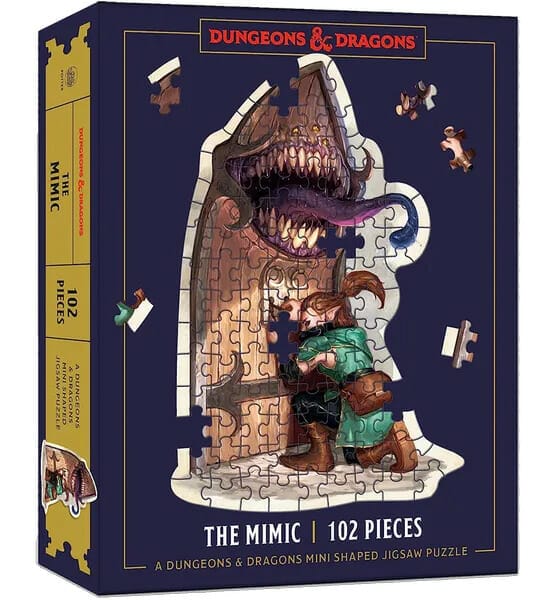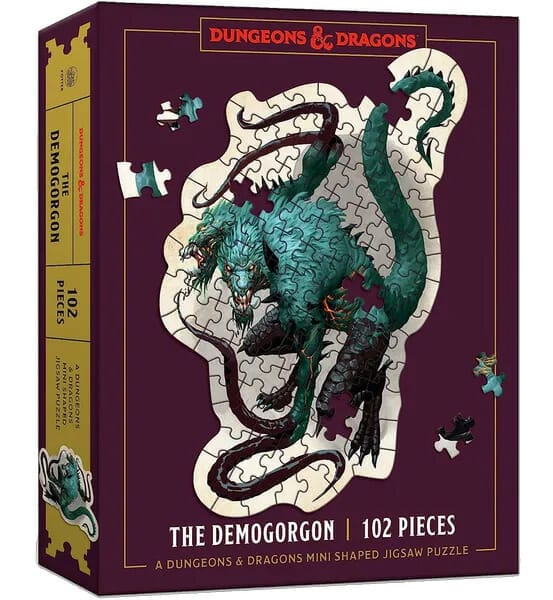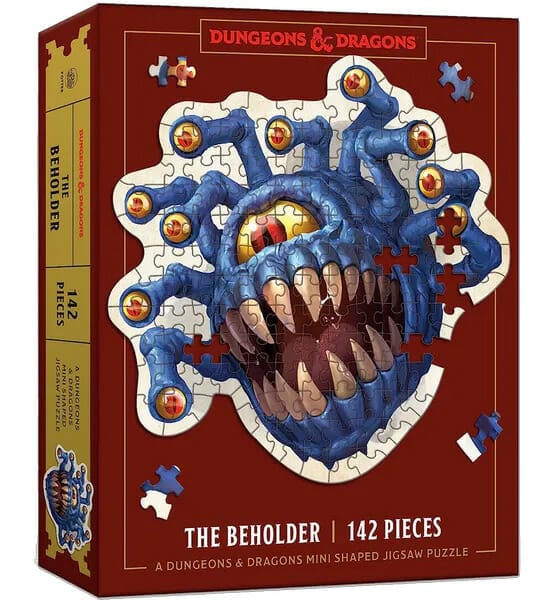Clarkson Potter Publications have found one of my favourite Mimic illustrations for their mini jigsaw puzzle.
I like it because the Mimic is a door, not a chest, and some luckless gnome or halfling is trying to pick it. I may also like it because the mini jigsaw is only 102 pieces, which might be within my skill range.
Many years ago, Geek Native and friends put together a list of things other than chests and doors that mimics could be. I thought the suggestion of a helmet was especially evil.
In the same range, there’s the mini Demogorgon. In this case, it’s a traditional D&D Demogorgon, not the Stranger Things re-imagination.
If you’re looking for a more formidable challenge, then there’s the Beholder. Another official D&D jigsaw by Clarkson Potter, The Beholder, is 142 pieces but fits into the same size.
Jigsaws are only a few hundred years old
The history of jigsaws is long and winding, with many different people and companies claiming to have invented them. However, the most widely accepted story is that John Spilsbury, a London mapmaker, created the first jigsaw puzzle in 1760.
Spilsbury was a skilled engraver who created a puzzle by cutting up a map of England and Wales. He glued the pieces onto a piece of wood, and then he sold the puzzle to children as a way to learn about geography.
Spilsbury’s puzzles were a hit, quickly becoming popular all over Europe. In the early 1800s, jigsaw puzzles began to be made with other types of images, such as landscapes and portraits. They also became more elaborate, with more pieces and more intricate designs.
In the late 1800s, jigsaw puzzles began to be mass-produced in factories. This made them more affordable and accessible to people of all ages. Jigsaw puzzles also became a therapeutic tool for people with disabilities and mental health problems. I indeed find them a welcome distraction, although perhaps not Mimic jigsaws!
Today, jigsaw puzzles are still popular all over the world. They are enjoyed by people of all ages and used for various purposes, such as entertainment, relaxation, and therapy.




